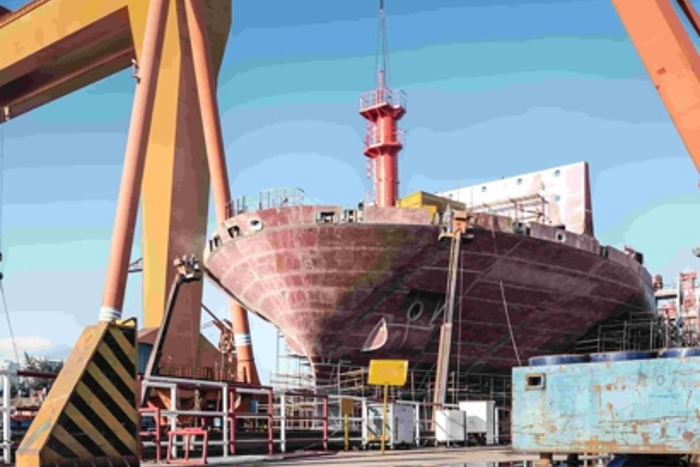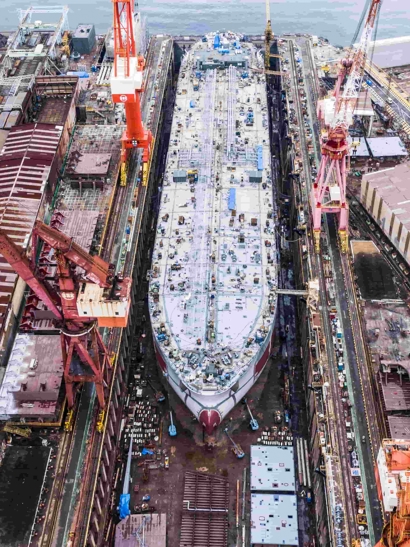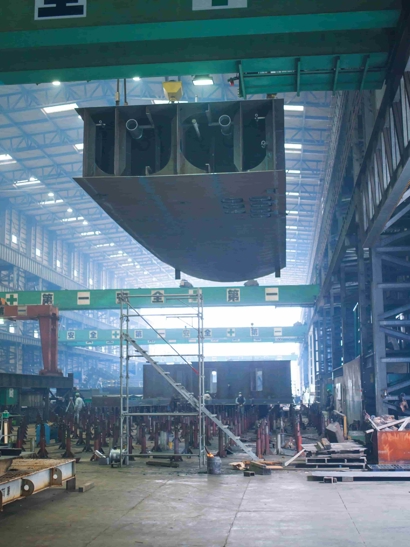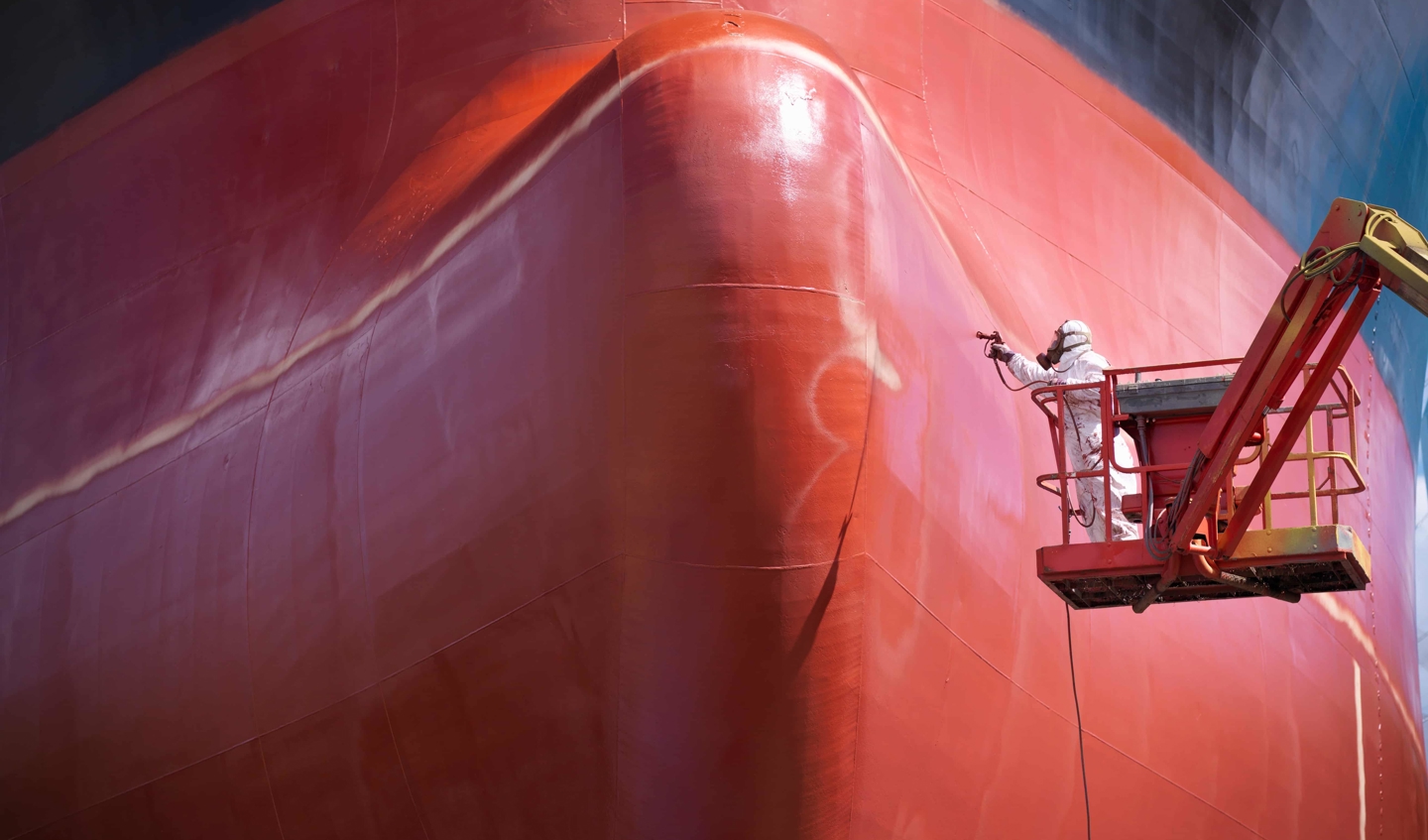At the COP26 climate summit last November more than 20 nations signed up to the Clydebank Declaration to establish green corridors – shared maritime trade routes on which to scale up zero-emission shipping. The corridors will require vessels powered by alternative fuels as well as the necessary port infrastructure involved, with an initial six targeted by 2025, before a rapid expansion to support and accelerate the IMO’s target of a 50% reduction of shipping’s overall GHG emissions by 2050.

In the six months since, several alliances have announced plans to create green corridors, informs Nick Gross, Global Containerships Segment Director at Lloyd’s Register. Notably these include the port pair of Shanghai-Los Angeles, the Australia-Japan iron ore trade, as well as regional projects covering the EU, Chile and intra-Asia.
“The real challenge now will be converting the intent into something tangible and sustainable”, says Gross, who notes that different stakeholders may find it difficult to discuss and agree some of the practicalities involved because of “perceived legal constraints concerning anti-trust”. However, joint projects comprising stakeholders from across different sectors of shipping – such as banks, fuel suppliers, ports and shipyards, as well as shipowners and class societies - are vital to achieving an efficient and coordinated energy transition, he adds.
Another key aspect is analysing the suitability of different alternative fuels for specific trade routes, Gross points out. Lloyd’s Register has already introduced a useful tool in this respect in the form of the Zero-Carbon Fuel Monitor, one of the services offered by the LR Maritime Decarbonisation Hub. It analyses the viability of different alternative fuels and corresponding infrastructure within a specific trade region in terms of the readiness of technology, investment and community.
For containerships, this analytical model can gauge price premium per TEU for different future fuels. It will underpin the Silk Alliance, to a recently formed green corridor initiative founded by Lloyd’s Register. The Silk Alliance focuses initially on container shipping in intra-Asia, where it aims to build a fleet specific decarbonisation plan in collaboration with stakeholders across the supply chain.
“While the landscape will continue to evolve, the direction of travel is clear, for which green corridors act as a necessary test bed and blueprint” believes Gross.
"At LR, we strive to support an informed and efficient energy transition, for which we feel the detailed analysis and ‘system solution’ approach applied by the Silk Alliance will be key."
Regulatory requirements will be met through a combination of “retrofit and renewal”.
In the short term, emissions of existing ships can be reduced through energy-saving improvements - such as hull modification with addition of a bulbous bow, wind-assisted propulsion and use of route optimisation tools. In the longer term, however, adoption of alternative fuels and engine technology is the only real solution. This level of investment is daunting, but green corridor initiatives, such as LR’s Silk Alliance, help aggregate demand and ultimately pave the way for a future proof-fleet strategy.
With existing vessels, green corridors could lead to engine retrofits, believes Gross, although the space availability at yards with the expertise and technical support for such complex conversion work may prove a problem. A recent transition study conducted by the University of Maritime Advisory Services (UMAS) and the Getting to Zero Coalition estimated that as many as 35,000 vessels or nearly half the global fleet might need engine retrofits in order to use alternate fuels ahead of 2050.

In terms of boxship design changes prompted by green corridors and the move to zero-emission fuels, LR’s Containerships Sector Director says he doesn’t see “the overall shape, or integral design of vessels changing greatly, but there will be a lot of small changes to tanks and piping that will help streamline future fuel adoption, be it new-build or retrofit, in terms of minimising impact on TEU capacity, CAPEX and consumption and range”.Newbuild vessels that will be needed for green corridors could include “containerships, bulk carriers, and to a certain extent tankers”, says LR’s Shanghai-based Global New Construction Sales Manager, Roger Cornish, “as well as transpacific car carriers”.
Selection criteria for vessels used on green corridor routes “will include the trade need as well as carbon intensity”, he continues.
From a newbuilding perspective, what will change is “the focus of the vessel specification” to define the technology selection to meet the demands of the trade. Owners will continue to need yards to produce vessels that can carry a specific cargo at a set speed on a particular trade route - normally in order to meet charterers’ need – but now with zero emissions. It will be up to the shipyard to be able to source the necessary equipment and integrate it, on time and on budget, he says.
“Also, this fuel transition is more difficult than ever before”, Cornish adds. “Not only does the risk profile change completely, but so does the space requirement for future fuels, because the energy density of the oil that they are replacing is much lower”.
Fuel oil has been the industry standard for some 70-80 years, he continues, “but now we have to step away from that comfort zone, so all shipyard practices, designs and supply chains are going to be upset”. That’s why having cross-industry alliances on green corridors, as LR has done with the Silk Alliance, are so important according to Cornish, “in order to identify and mitigate the risks associated with that fundamental change”.
As a good example he points to the Castor Initiative project, where LR is working on developing a zero-emission deepsea tanker jointly with operator MISC, shipyard Samsung Heavy Industries, port authority MPA of Singapore, engine maker MAN Energy Solutions, ammonia producer Yara International and bunkering hub Jurong Port.
However, in a commercial market a green corridor “doesn’t guarantee business for a shipyard, it just defines a vessel specification”, he adds, “so yards have to develop a design to meet that specification”. And here Cornish alludes to what he calls the two big challenges associated with newbuildings at present - cost and availability.
New vessel prices are currently some 35% to 40% higher than at the start of 2021, he says, “and likely to continue going up in the short term because of the cost of raw materials including steel and the price of oil”.
Lack of available capacity is the other big issue. At top-tier yards there are very few slots available before 2025, says Cornish, “and it’s precisely these yards that have the R&D and technical capability, as well as the market reputation, to deliver technologically advanced vessels for green corridors”.
“So even if new vessels are signed for today, they aren’t going to be available until 2026 at the earliest, meaning it will be a significant challenge to have enough new vessels operational by 2030”.
Then there is the question of fuel supply infrastructure, including bunker vessels capable of loading ships at anchor. Here Cornish points to the challenge of dealing not only with storage at either high pressure or at cryogenic temperatures - as with LNG fuel - but in ammonia’s case with the fuel’s high toxicity, particularly critical at the interface of vessel-to-vessel transfers.
On the positive side, however, green corridors may be at varying early stages of development but they are “gaining traction rapidly,” says Cornish. Aided by “the breadth of stakeholders joining in and the number of agreements and alliances being formed” - including high street brands driven by their ESG commitments and Scope 3 emission targets.
Green corridor alliances and partnerships are “absolutely essential”, in breaking down the “massive issue” of decarbonisation into “bite-size chunks”, concludes the LR newbuilding specialist. What’s happening now is the same model as employed by advocates of LNG as a marine fuel some 5 to 7 years ago; “players with skin in the game getting to together to address the macro challenges by making things work at a small-scale.” It’s a starting point from which the maritime industry has shown itself to be very good at adapting.
LR leads the way with Silk Alliance
LR is leading the way in bringing together the shipping industry, as well as those in the wider marine supply chain, to bring forward new green initiatives. An industry-leading pilot is being established, ‘The Silk Alliance,’ to develop a green corridor cluster in the intra-Asia container trade.
Initiated by the Lloyd’s Register Maritime Decarbonisation Hub, The Silk Alliance brings together a diverse group of organisations whose collaboration can advance the decarbonisation of the maritime industry. These include shipowners, a shipyard, a bunker logistical supplier, an engine manufacturer, a ship manager and financial institutions.
The Silk Alliance will be based on the Lloyd’s Register Maritime Decarbonisation Hub’s First Mover Framework. Examining the fuel transition for shipping across the entire supply chain means benefits can be identified and unknowns managed. Investments have the best chance of success if based on a system solution. The system in this case is the entire supply chain from fuel suppliers to end-users. This can be done by assessing how the fuel supply may evolve in conjunction with the fleet evolution.
By bringing the industry together, LR is seeking to ensure the development of a fleet fuel transition strategy that can enable the establishment of a highly scalable green corridor cluster. In turn, this could be applied to other shipping sectors and will drive forward investment and cooperation for a green and sustainable maritime sector.









